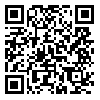







































BibTeX | RIS | EndNote | Medlars | ProCite | Reference Manager | RefWorks
Send citation to:
URL: http://ijt.arakmu.ac.ir/article-1-1501-en.html


 , Musa Omoyine Iliyasu2
, Musa Omoyine Iliyasu2 

 , Ameh Omede3
, Ameh Omede3 

 , Shedrack Egbunu Akor4
, Shedrack Egbunu Akor4 

 , Al-Hassan Abubakar5
, Al-Hassan Abubakar5 

 , Oladele Joshua Alabi6
, Oladele Joshua Alabi6 

 , Mathew Akpa7
, Mathew Akpa7 

 , Alexander Lawrence4
, Alexander Lawrence4 


2- Department of Anatomy, Faculty of Basic Medical Sciences, College of Health Sciences, Prince Abubakar Audu University, Anyigba. Nigeria.
3- Department of Medical Biochemistry, Faculty of Basic Medical Sciences, College of Health Sciences, Prince Abubakar Audu University, Anyigba, Nigeria.
4- Department of Medical Laboratory Science, College of Health Sciences, Prince Abubakar Audu University, Anyigba, Nigeria.
5- College of Medicine, University of Nigeria, Enugu Campus, Nigeria.
6- Department of community medicine, college of health science Prince Abubakar Audu,University, Anyigba,Nigeria.
7- Abu Arish General Hospital, Saudi Arabia.
Background: The informal abuse of a mixture of tomtom candies and Lacasera beverage, known as Lacatomtom (LTT), is a growing public health concern in Nigeria. Given the brain's high vulnerability to oxidative stress, this study evaluated the effects of oral LTT consumption on brain oxidative stress and antioxidant enzyme responses in Wistar rats.
Methods: A total of 24 male Wistar rats were divided into four groups: control (distilled water), LTT, Lacasera, and Tomtom in water (TTW). Samples were orally administered once daily for 30 days, after which brain tissue was analyzed for malondialdehyde (MDA) and key antioxidants, including superoxide dismutase (SOD), catalase (CAT), glutathione peroxidase (GPX), and reduced glutathione (GSH) using standard methods.
Results: The LTT consumption significantly elevated brain MDA levels, indicating increased lipid peroxidation and significant oxidative stress. Concurrently, it upregulated SOD, CAT, GSH, and GPX activity, suggesting a strong but ultimately insufficient compensatory antioxidant response. Lacasera alone also contributed to elevated MDA, with its aspartame content identified as a potential factor. The TTW mixture showed a milder oxidative stress profile. However, the complete LTT mixture induced the most pronounced oxidative stress, accompanied by the strongest compensatory antioxidant response, indicating synergistic neurotoxic effects.
Conclusion: In conclusion, oral LTT consumption significantly induces brain oxidative stress in Wistar rats. The complete LTT mixture exhibits more pronounced neurotoxic effects than its individual components, highlighting a serious public health threat linked to its psychoactive properties and documented multi-organ toxicity.
| Rights and permissions | |
 |
This work is licensed under a Creative Commons Attribution-NonCommercial 4.0 International License. |




